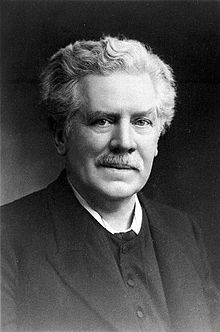Gustav Retzius
| Gustaf Retzius | |
|---|---|

Gustaf Retzius
|
|
| Born | 17 October 1842 |
| Died | 21 July 1919 (aged 76) |
| Nationality | Swedish |
| Alma mater |
Uppsala University Lund University |
| Known for | nervous system |
| Scientific career | |
| Fields | histology, neurology |
| Author abbrev. (botany) | G.Retz. |
Prof Magnus Gustaf (or Gustav) Retzius FRSFor HFRSE MSA (17 October 1842 – 21 July 1919) was a Swedish physician and anatomist who dedicated a large part of his life to researching the histology of the sense organs and nervous system.
Retzius was born in , son of the anatomist Anders Retzius (and grandson of the naturalist and chemist Anders Jahan Retzius). He enrolled at Uppsala University in 1860, and received his medicine kandidat degree there in 1866, transferred to the Karolinska Institute, where he became medicine licentiat in 1869 and completed his doctorate in medicine (Ph.D.) in 1871 at Lund University.
He received an extraordinary professorship in histology at the Karolinska Institute in 1877 and an ordinary professorship in anatomy there in 1889 (acting from 1888), but resigned in 1890 after conflicts with other members of the institute. As he was married to the feminist Anna Hierta, daughter of the founder of the newspaper Aftonbladet Lars Johan Hierta, his personal wealth allowed him to pursue his research and writing without any stable employment. Moreover, Retzius serve as the editor of the Aftonbladet (1884–87) and was also a journalist there.
Gustaf Retzius published more than 300 scientific works in anatomy, embryology, eugenics, craniometry, zoology and botany. He gave his name to the 60 micrometer-diameter Retzius cells in the central nervous system of the leech (Hirudo medicinalis).
...
Wikipedia
